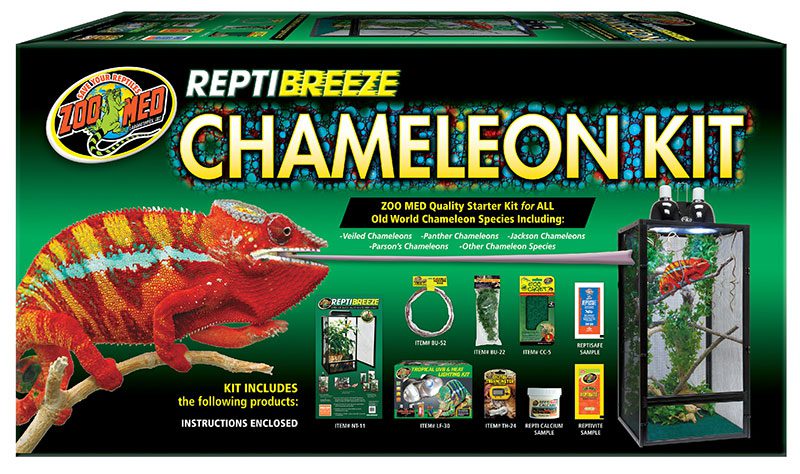Setting up a chameleon habitat isn’t an easy task. You need to know your pet very well to make sure it feels comfortable and safe. And setting up a reptile environment for your chameleon is the most important step in their care.
The first step is to find the right location for your cage. This can be in a room, garage shed or outdoors. Make sure that it doesn’t have any light sources like windows or doors that could let in bugs and make sure that it has plenty of ventilation, so it doesn’t get too hot or cold.
Next, you will need to build a terrarium using tempered glass at least 30 inches tall and at least 18 inches wide with non-slip, silicone matting on the bottom and walls of the cage, so your chameleon doesn’t slide around. The area should be big enough for the chameleon to move around in, but not so big that their favorite hiding spots are too far away for you to remove them.
Most experts recommend having a chameleon enclosure at least 30 inches high so that the chameleon can climb up on top of it and not get stuck in between shelves or bars.
Next, it should be easy to clean and maintain—you don’t want to spend hours scrubbing the cage with soap and water if it’s not necessary.
Finally, it should be easy to get your pet into and out of it—no struggling with a heavy door!

In our experience, one of the best choices for a chameleon is the T-Rex Double Door Glass Terrarium. This option is great because of the double front doors, raised bottom frame and waterproof bottom.
You can customize the setup any way you like; it’s easy to clean and you can even lock it with a special lock if your reptile friend likes to pull the occasional Houdini. The size is also perfect for adding branches, ivy or anything else your chameleon might enjoy climbing.
What do chameleons need in their cage?
For the perfect setup for chameleons, you will need:
- A heat lamp. Your chameleon can’t regulate its body temperature without the right setup. You’ll want the bottom of your habitat to stay at cooler temperatures (65–80 degrees Fahrenheit) and the top to be warmer (80–85 degrees Fahrenheit for Jackson’s chameleons and 90–100 degrees Fahrenheit for veiled chameleons). You’ll need two thermometers—one for each part of the chameleon terrarium.
- UVB lighting. In addition to heat, your chameleon needs a 12-hour day/12-hour night cycle. Research shows that UVB lighting is the best option for reptile health.
- Humidity control and drinking water. Chameleons need both a source of dripping water to drink and something to create humidity. This simulates their natural habitat in the wild. A humidity gauge will help you stay on top of managing the terrarium’s climate.
- Substrate or bedding. It’s rare for chameleons to spend much time on the bottom of their cages. But for absorbing extra moisture, waste and to make clean-up easier, substrate is very helpful.
- Appropriate food. Most chameleons do best with a mix of insect prey, like crickets, mealworms, grasshoppers and caterpillars. It’s also wise to feed your crickets a high-calcium supplement so your chameleon gets the nutrients they need most.
Chameleons are known for their ability to change colors and patterns, making them a unique and interesting pet. But you have to take the time to properly set up a chameleon cage to give your new reptile a long, happy life.
Chameleon lighting and heat are absolutely crucial, despite the limited space in their cages to do so. The cage should provide them with necessary functions, like humidity and temperature control, safety, security and a reliable diet.
What temperature should you keep a chameleon cage?
A chameleon cage actually needs to be a range of temperatures throughout the day and night, depending on the breed of your chameleon.
For Jackson’s chameleons, the bottom of your terrarium should be between 70–80 degrees Fahrenheit during the day and the top should be between 80–85 degrees Fahrenheit. At night, the entire terrarium should be between 65–70 degrees Fahrenheit.
For veiled chameleons, you’ll want the bottom of your terrarium to be between 70–80 degrees Fahrenheit during the day and 90–100 degrees Fahrenheit at the top. At night, you’ll want an overall temperature between 65–70 degrees Fahrenheit.
How do you keep the humidity up in a chameleon cage?
The best way to keep the humidity up in a chameleon cage is with a waterfall designed for reptile terrariums or a programmable misting system. You can also save a bit of money with a handheld mister, though you’ll need to mist the entire terrarium once or twice daily.
Keeping the humidity up in your chameleon enclosure is essential to keeping your chameleon happy and healthy. The humidity level should range between 65% to 80% at any given time.
What kind of plants go in a chameleon cage?
There are many different species of plants that would thrive in a chameleon cage, but it all depends on the size and type of your cage. For example, if you have an arboreal chameleon that likes to climb, you might want to include some vines or bamboo. On the other hand, if your pet likes to sunbathe at the top of its cage, you could get something like ivy or ferns.
The most important thing is ensuring you buy chameleon-safe plants. Here are some options that are safe for your new reptile friend, and also likely to keep them entertained:
A few types of flowers make great chameleon safe plants too, like:
It’s almost always best to opt for live plants instead of plastic. Many chameleons like to snack on the leaves of these plants. Most importantly, chameleons certainly aren’t encountering plastic plants in their natural habitats—and you want to simulate that habitat in your chameleon cage as much as possible.
What kinds of decorations go in a chameleon cage?
Your chameleon cage can be decorated in many different ways. Some owners use rocks or logs to create an aesthetically pleasing enclosure and provide their chameleons with hiding spots. Combining form with function in this way is a very smart use of space.
You may also consider adding decorative bamboo, branches, driftwood or a stone statue to make your chameleon terrarium look more natural and beautiful. PVC pipes or pipe sections can also be used as decoration to help create more ways for your chameleon to climb and explore.
Now you know all the details involved in how to set up a chameleon cage! When you take the time to create a stimulating and supportive chameleon terrarium, you can expect to enjoy your new pet’s company for years to come.





